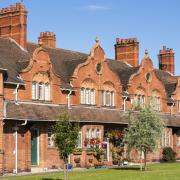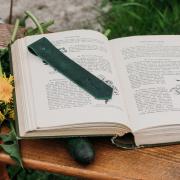Ancient black and white timber-framed buildings still stand across Cheshire today. With many dating from as far back as the 15th century, they reflect the rich historical past and character of the county, and across the border into Merseyside stands a 16th-century timber-framed built close to the banks of the Mersey Estuary that tells its own story from the past. Much of the fabric and many of the treasures of Speke Hall remain intact and accessible to visitors.
History records that in 1524, Sir William Norris inherited the medieval cruck-beamed mansion house on what was to become the site of Speke Hall. His ancestors had lived on the land since at least 1314 AD. By 1530 Sir William had begun to build the Great Hall that would incorporate the cruck-beamed hall. In 1531 the Great Oak Parlour was added and in 1546 he extended the family home once again by creating a long west range.
He married twice, firstly to Ellen, daughter of Roland Bulkeley of Beaumaris, Anglesey. Ellen gave birth to six daughters and one son. His second wife, Anne, bore six sons and six daughters. An overmantle in the Oak Parlour of the hall was created to display portraits of Sir William, his parents, two wives and 19 children.
The lord of the manor was the eldest son of Henry Norris, succeeding his father in 1524 before being knighted in 1531. In April 1554 he became the Member of Parliament for Liverpool.
Sir William Norris died in 1568 and was laid to rest in Childwall, six miles from Speke Hall. On succession, his eldest son, Edward, ordered new construction work at the hall, firstly by extending the east range of buildings, then adding a north range and creating a central courtyard. By 1598, a sandstone bridge had been built to cross over the surrounding moat. Now complete, the hall was a place of magnificence and Elizabethan splendour. Built into the fabric of the hall was a priest hole, designed to hide a Catholic priest in times of trouble.
Many of the gentry in the region were sympathetic towards the Catholic church. The Norris family was no exception and in 1568 one Richard Brittaine, a Catholic priest, was sent to Speke Hall by Edward Norris, hiding in the secret hole behind panelling in the Green Room.
By 1835, the hall had become all but abandoned following the death of its then-owner, Richard Watt IV, the son of a racehorse owner. For the next 20 years, it was allowed to decay into a ruinous state. But in 1856, Richard Watt V began along with his wife Adelaide Hignett of Chester, ordered a renovation programme, installing Gothic Revival interiors and furnishing the hall to their own liking. Over the next century, the hall was passed through the family, until in 1986 the National Trust took over the management of Speke Hall. Today the wattle-and-daub Tudor manor house in Speke – one of the finest surviving examples of its kind – and its magnificent gardens with colourful borders, a kitchen garden, traditional orchard, manicured lawns and sheltered woodland known for its bluebells, provide a green oasis on the edge of Liverpool.
View my local history films featuring historical locations around Cheshire and beyond by visiting my history channel, youtube.com/@Tvpresenter4history.



























